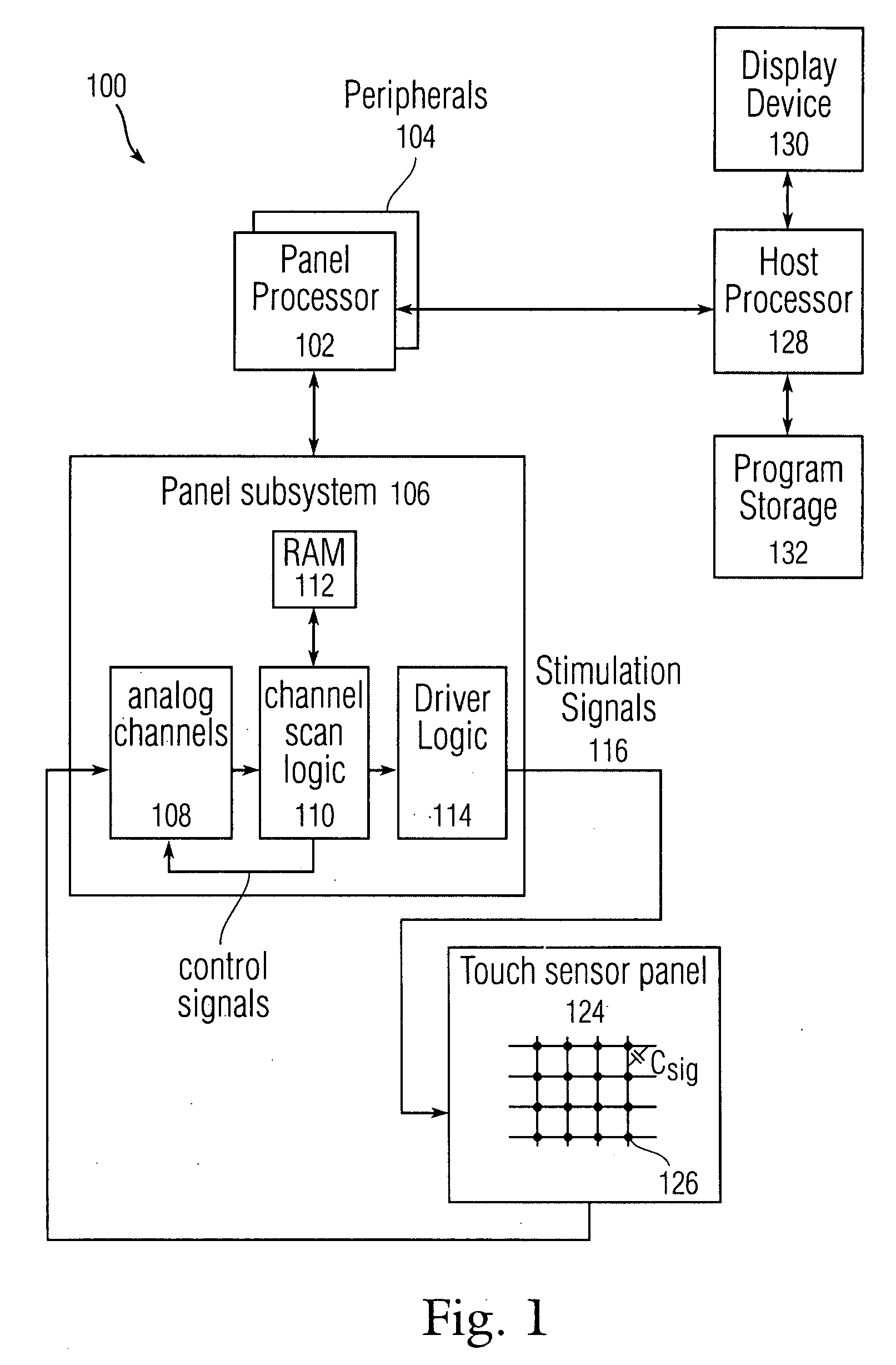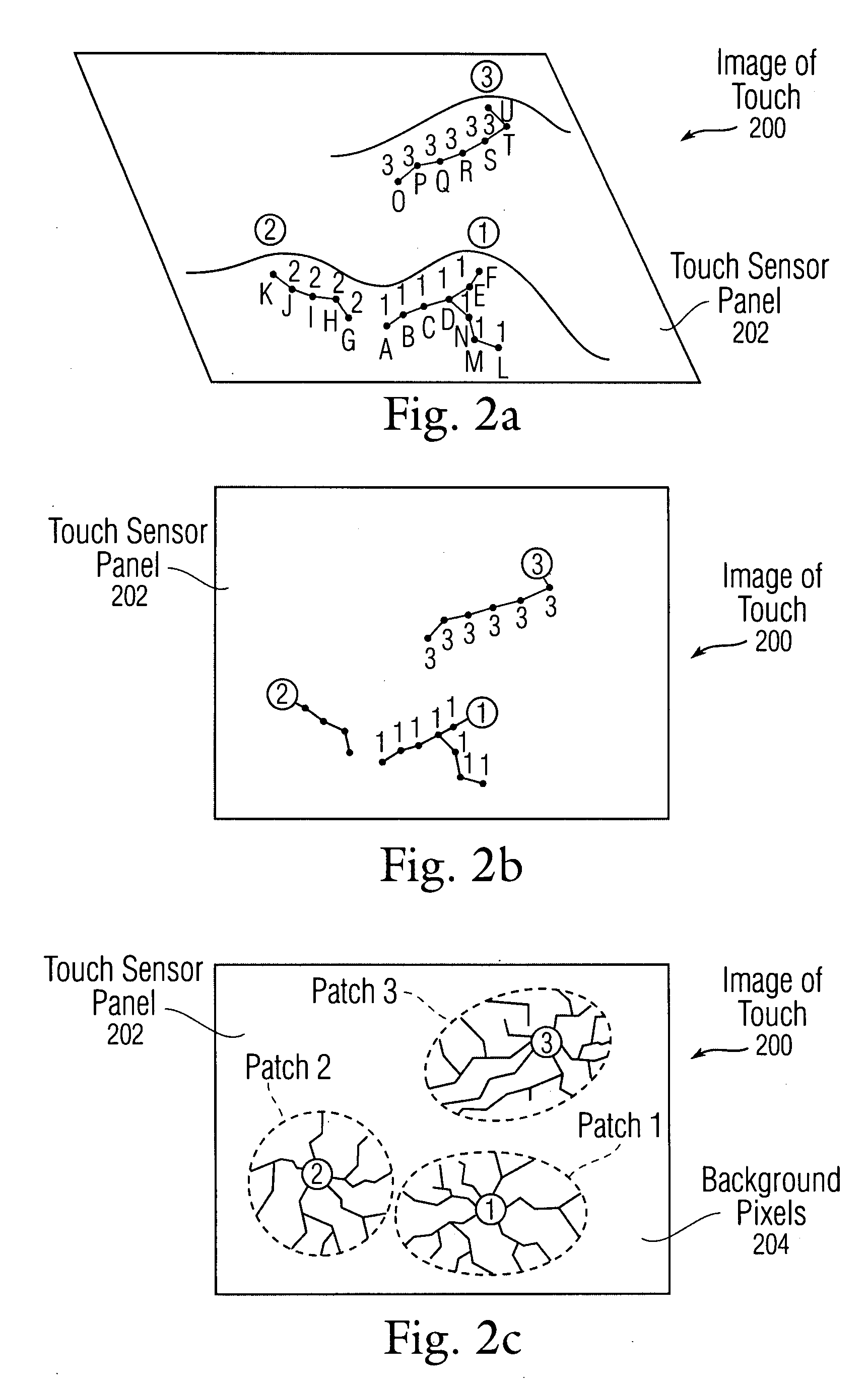Bottom up watershed dataflow method and region-specific segmentation based on historic data
a watershed data and historic data technology, applied in the field of touch sensor panels, can solve problems such as inaccurate centroid calculations, and achieve the effects of improving the accuracy of centroid calculations, more accurate centroid locations, and accurate centroid locations
- Summary
- Abstract
- Description
- Claims
- Application Information
AI Technical Summary
Benefits of technology
Problems solved by technology
Method used
Image
Examples
Embodiment Construction
[0020]In the following description of preferred embodiments, reference is made to the accompanying drawings which form a part hereof, and in which it is shown by way of illustration specific embodiments in which the invention can be practiced. It is to be understood that other embodiments can be used and structural changes can be made without departing from the scope of the embodiments of this invention.
[0021]This relates to applying a watershed algorithm to pixels and their touch values obtained from a scan of a touch sensor panel to determine patches corresponding to images of touch. Prior to applying the watershed algorithm, background pixels having little or no touch values can be eliminated from consideration, and some amount of smoothing can be performed on the pixels to connect overly segmented patches. After the watershed algorithm has been applied, patches whose pixels are substantially linear (e.g. lie within a single row or column), or patches having a very small number o...
PUM
 Login to View More
Login to View More Abstract
Description
Claims
Application Information
 Login to View More
Login to View More - R&D
- Intellectual Property
- Life Sciences
- Materials
- Tech Scout
- Unparalleled Data Quality
- Higher Quality Content
- 60% Fewer Hallucinations
Browse by: Latest US Patents, China's latest patents, Technical Efficacy Thesaurus, Application Domain, Technology Topic, Popular Technical Reports.
© 2025 PatSnap. All rights reserved.Legal|Privacy policy|Modern Slavery Act Transparency Statement|Sitemap|About US| Contact US: help@patsnap.com



